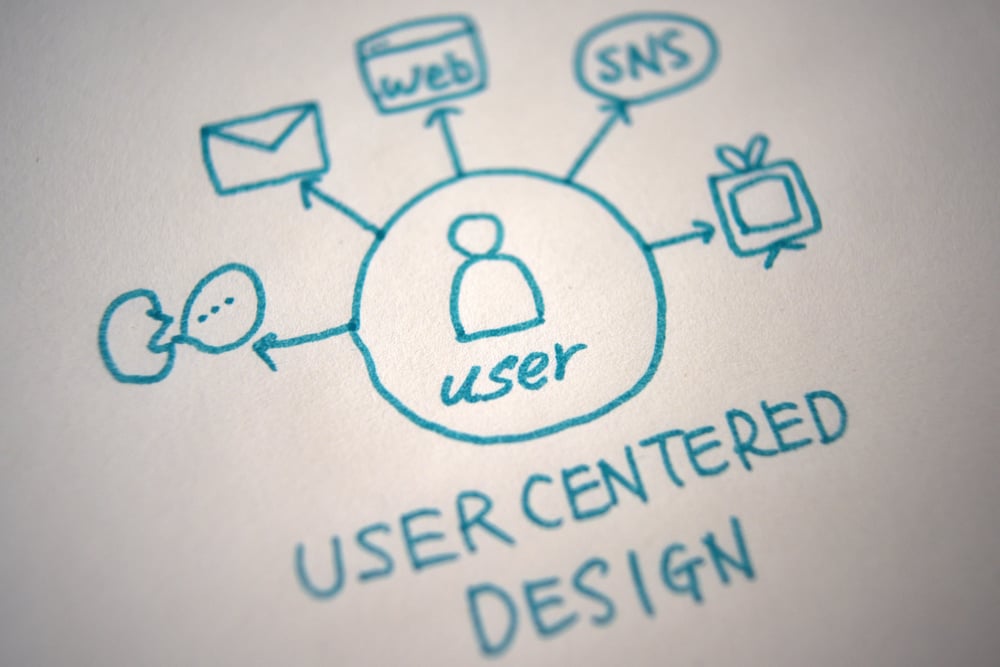In the digital age, the UK public sector stands at a crucial crossroads. Delivering efficient, accessible, and citizen-centric services demands a fundamental shift in approach – one that places the user at the heart of every design decision. Enter User-Centered Design (UCD) principles, a proven framework for crafting digital experiences that resonate with citizens, streamline processes, and ultimately, foster trust and engagement. This blog delves into the core principles of UCD, showcasing how they can transform the UK public sector landscape, one interaction at a time.

Understanding the Citizen-Centric Imperative:
For decades, public sector digital services prioritised internal needs over user experience. Websites felt like bureaucratic labyrinths, forms resembled inscrutable puzzles, and the frustration citizens encountered left them disengaged and disenfranchised. UCD offers a refreshing antidote, shifting the focus from internal processes to user motivations, needs, and expectations. Its core principles provide a roadmap for building accessible, intuitive, and responsive digital experiences that empower citizens to navigate services seamlessly and efficiently.
The Pillars of UCD in the Public Sector:
- Empathy First: UCD champions deep understanding of user needs and challenges. Conducting research, user interviews, and usability testing fosters empathy and ensures design decisions are based on real-world experiences, not assumptions.
- Accessibility for All: No citizen should be left behind. UCD prioritises accessibility, ensuring interfaces are compatible with assistive technologies, navigation is intuitive, and content is clear and concise for diverse audiences.
- Iteration and Evolution: UCD is not a one-off process. Continuous feedback loops, A/B testing, and ongoing user research fuel iterative design, allowing services to adapt to changing needs and user behavior.
- Collaboration is Key: Effective UCD necessitates cross-functional collaboration. Developers, designers, content creators, and policy experts must work together, ensuring every aspect of the service aligns with user expectations.
- Simplicity Reigns Supreme: Complexity is the enemy of engagement. UCD emphasises clear, intuitive interfaces, streamlined workflows, and minimal cognitive load, minimising user frustration and maximising service efficacy.
- Transparency Fosters Trust: Open communication is vital. Explain design decisions, provide clear instructions, and offer accessible help options. Openness builds trust and empowers citizens to navigate services with confidence.
Realising the Transformative Power of UCD:
Embracing UCD principles unlocks a cascade of benefits for the UK public sector:
- Enhanced Citizen Satisfaction: User-centric services foster trust, engagement, and positive user experiences, leading to increased satisfaction and stronger public-sector relationships.
- Improved Service Efficiency: Streamlined interfaces and intuitive workflows reduce user errors, boost completion rates, and optimise staff resources, leading to significant cost savings.
- Greater Inclusion and Accessibility: Design that caters to diverse needs and abilities ensures no citizen is excluded from accessing vital services, promoting equality and social justice.
- Boosted Innovation and Agility: Continuous user feedback fosters a culture of innovation, allowing the public sector to rapidly adapt to evolving needs and stay ahead of emerging trends.
Taking the First Step:
Implementing UCD within the public sector requires a strategic approach:
- Leadership Buy-in: Securing commitment from policymakers and leadership is crucial. Investing in UCD training and building dedicated design teams demonstrate a genuine commitment to citizen-centric services.
- Building the Right Tools: Equipping teams with user research tools, accessibility testing software, and prototyping platforms facilitates efficient and effective UCD implementation.
- Creating a Collaborative Culture: Breaking down silos and fostering communication between departments is essential. Cross-functional workshops, user co-creation sessions, and feedback loops promote user-centricity throughout the organisation.
The UCD Promise:
In a world of increasingly complex digital interactions, User-Centered Design principles offer the UK public sector a powerful tool to bridge the gap between citizens and services. By putting people first, prioritising accessibility, and embracing continuous improvement, the public sector can create efficient, inclusive, and truly transformative digital experiences that empower citizens and strengthen the fabric of society. So, join the UCD revolution – invest in people, prioritise empathy, and watch your public services blossom into platforms for positive change.
Piers Kelly
Experienced Marketing Manager with a demonstrated history of working in the events services industry. Enjoys writing on Cyber Security, Emerging Tech & Digital Transformation. Marketing professional with a Bachelor of Arts (BA) in Politics and Economics from Newcastle University.


-Apr-25-2024-09-43-35-5584-AM.png?width=80&height=80&name=Untitled%20design%20(77)-Apr-25-2024-09-43-35-5584-AM.png)
